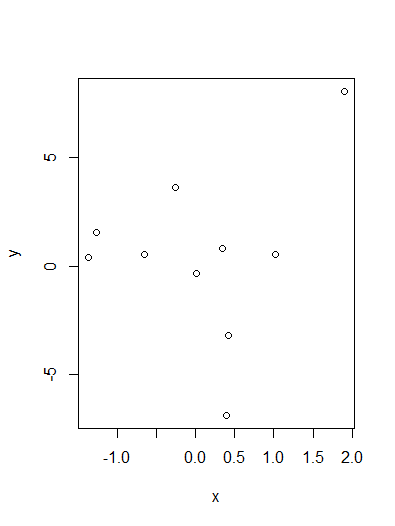R语言系列:自定义function
在用R语言做各种事物时,用户自定义函数是不可或缺的。这期来讲讲如何自定义R的function。首先要介绍的是function的基本框架:
myfunction <- function(arg1, arg2, ... ){
statements
return(object)
}- 函数名称为myfunction
- arg1,arg2 为参数
- statements 为函数语句
- return(object)返回结果
两个例子
例子一:随机数产生,画图
function1 <- function(x,y){
plot(x,y)
return(x+y)
}
> x <- rnorm(10)
> y <- rnorm(10,2,3)
> function1(x,y)
[1]
1.5828019
0.2661017 -2.7666838
9.9395144
3.3619610 -0.9452065 -6.4638374 -0.3288615
1.1402272
[10] -0.1285368出结果图
例子二:判断、条件句
function2 <- function(x,npar=TRUE,print=TRUE) {
if (!npar) {
center <- mean(x); spread <- sd(x)
} else {
center <- median(x); spread <- mad(x)
}
if (print & !npar) {
cat("Mean=", center, "n", "SD=", spread, "n")
} else if (print & npar) {
cat("Median=", center, "n", "MAD=", spread, "n")
}
result <- list(center=center,spread=spread)
return(result)
}
> x<-rnorm(10,0,1)
> function2(x)
Median= 0.2469624
MAD= 1.161068
$center
[1] 0.2469624
$spread
[1] 1.161068
总结
看懂这两,基本的函数应该可以实现,稍微复杂的,或别的更加复杂的函数,那就需要经验了。多练习多写代码是实现快速写代码的重要途径!
最后
以上就是鲤鱼黑夜最近收集整理的关于R语言:自定义函数的全部内容,更多相关R语言内容请搜索靠谱客的其他文章。
本图文内容来源于网友提供,作为学习参考使用,或来自网络收集整理,版权属于原作者所有。








![[R语言]3. R语言自定义函数](https://file2.kaopuke.com:8081/files_image/reation/bcimg13.png)
发表评论 取消回复